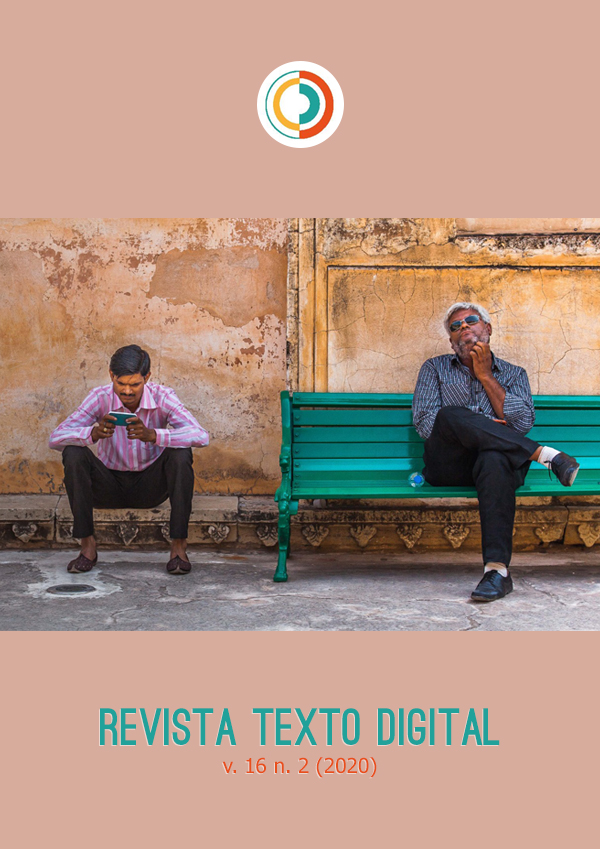Kind machine, terrible mother
myth and science in archetypal images in the film “I Am Mother”
DOI:
https://doi.org/10.5007/1807-9288.2020v16n2p171Abstract
We propose a reading of the film I Am Mother (2019), one of Netflix’s most celebrated contemporary fictional productions. Appealing to the concept of archetype, we analyze, through the perspective of cultural myth criticism, how the movie reconfigures the mytheme of the protective mother and also the one of the terrible mother, since the robotic character has an active role defining the heroic types and, therefore, the destiny of humankind. The subject is justified by the trend of the current distribution and consumption of cinema via streaming, which is a lived and effective format for the circulation of the mythic text. Finally, we offer the idea that the efficacy of the archetype in the filmic text lays down more on the mythical paradigms than on the scientific ones.
References
ALMEIDA, Milton José de. Imagens e sons: a nova cultura oral. Campinas: Autores Associados, 1994.
CAMARGO, Hertz Wendel de. Mito e filme publicitário: estruturas de significação. Londrina: Eduel, 2013.
CAMPBELL, Joseph. Mito e transformação. Trad.: Frederico N. Ramos. São Paulo: Ágora, 2008.
CANEVACCI, Massimo. Antropologia do Cinema. 2ª Ed. São Paulo: Ed. Brasiliense, 1990.
CONTRERA, Malena Segura. O mito na mídia. São Paulo: Annablume, 1996.
DisneyMusics. “Disney's "Dumbo" - Baby Mine”. 9 ene. 2014. Disponible en: https://www.youtube.com/watch?v=Q-8MbgMS6jo&ab_channel=DisneyMusic. Acesso en: 24 sep. 2020.
DisneyMusicVEVO. “Arcade Fire - Baby Mine (From "Dumbo"/Official Audio)”. 10 mar. 2019. Disponible en: https://www.youtube.com/watch?v=qpYOstfcQBs&ab_channel=DisneyMusicVEVO. Acesso en: 24 sep. 2020.
DURAND, Gilbert. Las estructuras antropológicas del imaginario. Trad.: Víctor Goldstein. México: Martins. Fontes, 2001.
ELIADE, Mircea. El mito del eterno retorno: arquetipos y repetición. Trad.: Ricardo Anaya. 3ª Ed. Madrid: Alianza Editorial, 2011.
I AM MOTHER. Dirección de Grant Sputore. Guion de Michael Lloyd Green. Australia: Southern Light Films; The Penguin Empire; Rhea Films, 2019. Netflix (114 min.).
JUNG, Carl Gustav. Arquetipos e inconsciente colectivo. Trad.: Miguel Murmis. Madrid: Paidós, 1970.
JUNG, Carl Gustav. Interpretação psicológica do dogma da trindade. Trad.: Mateus Ramalho Rocha. Petrópolis, RJ: Vozes, 2008.
LIPOVETSKY, Gilles. La tercera mujer. Permanencia y revolución de lo femenino. Barcelona: Anagrama, 2007.
LOSADA, José Manuel (ed.). Mitos de hoy - Ensayos de mitocrítica cultural. Berlín: Logos Verlag, 2016.
MORIN, Edgard. O paradigma perdido: a natureza humana. Trad.: Hernesto Neves, Lisboa: Publicações Europa-América, 2000.
PÉREZ-AMEZCUA, Luis Alberto. Hermes en la encrucijada: análisis mitocrítico de las novelas líricas de los contemporáneos. Guadalajara (México): STAUdeG, 2019.
ROTTEN TOMATOES. I Am Mother. Disponible en: https://www.rottentomatoes.com/m/i_am_mother#contentReviews. Acesso en: 24 sep. 2020.
VANOYE, Francis; GOLIOT-LÉTÉ, Anne. Ensaio sobre a análise fílmica. São Paulo: Papirus, 1994.
Downloads
Published
Issue
Section
License
Copyright (c) 2020 Hertz Wendel de Camargo, Luis Alberto Pérez-Amezcua

This work is licensed under a Creative Commons Attribution 4.0 International License.
Authors who have their works published in Texto Digital agree that:
Copyrights remain with the authors, who grant the journal the right of first publishing their submitted manuscripts. All materials published by the journalare under an Attribution 4.0 International - Creative Commons License, which allows them to be shared since authorship and first publication credits are mentioned.
The Attribution 4.0 International - Creative Commons allows the copy and redistribution of the material in any medium or format, as well as its adaptation for any purpose, even commercially.
Authors can take additional contracts for non-exclusive distribution of the version of their works published by our journal separately (e.g. to publish it in an institutional repository or as a book chapter) with both expressed authorship acknowledgment and Texto Digital’s first publication credit.



